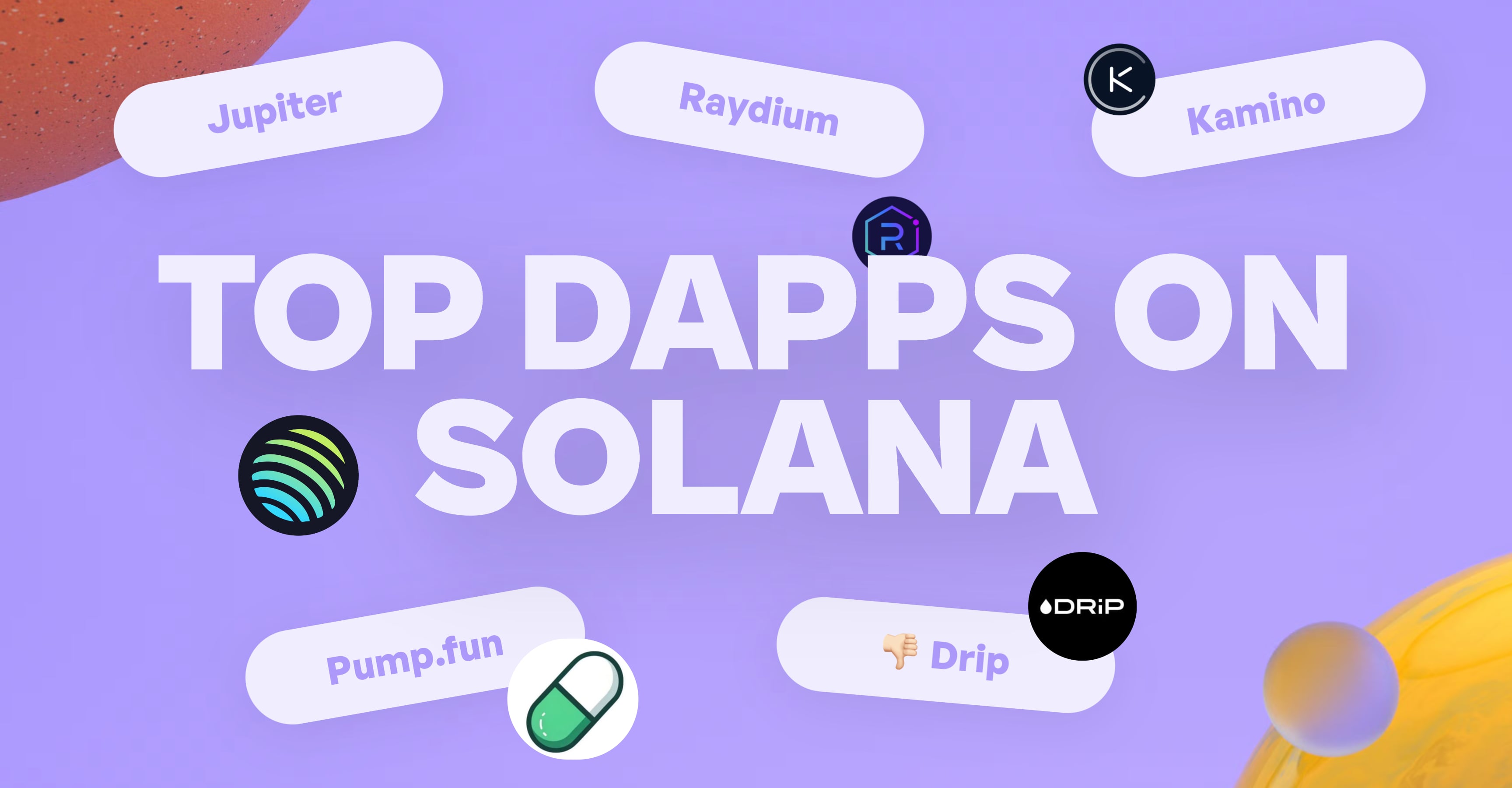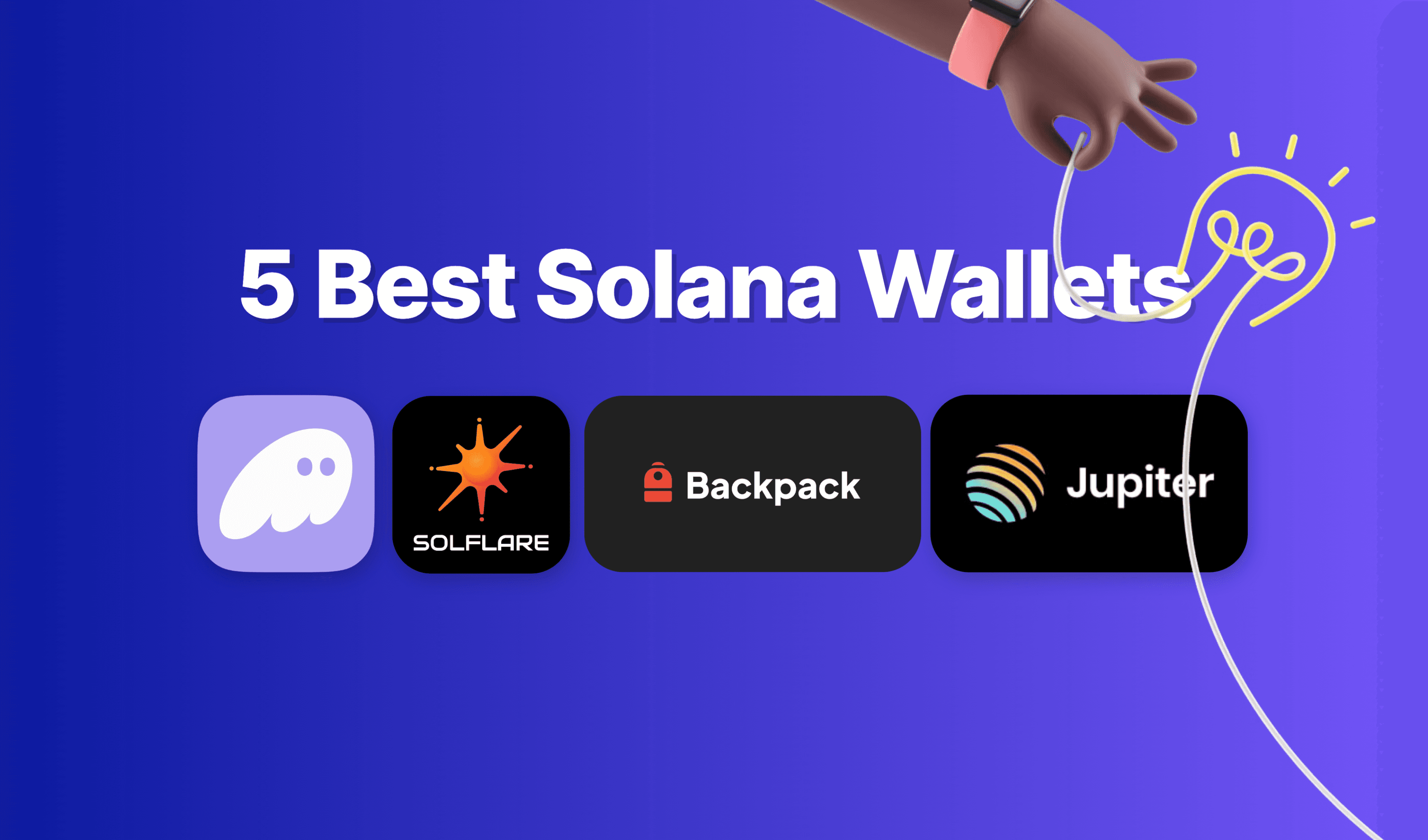Top 10 Solana Apps
Nov 6, 2024
|
5
min read
In the constantly changing world of blockchain technology, Solana has emerged as a formidable player, challenging established networks with its high-speed, low-cost transactions. At the heart of Solana's growing ecosystem are its decentralized applications (dApps), which are pushing the boundaries of what's possible in decentralized finance (DeFi), NFTs, and beyond. This blog post explores the top Solana dApps, their impact, and the future they're shaping.
Solana: A Quick Primer
Before diving into the dApps, let's briefly recap what makes Solana unique:
High throughput: Capable of processing up to 65,000 transactions per second
Low transaction costs: Fees typically less than $0.01
Fast finality: Transactions are confirmed in seconds
Energy-efficient Proof-of-Stake consensus mechanism
These features have attracted developers and users alike, fueling the growth of a vibrant dApp ecosystem.
Top Solana dApps

Key metrics across some of the top Solana dApps
1. Jupiter Exchange
Jupiter Exchange has become the cornerstone of Solana's DeFi ecosystem.
Key stats:
Daily trading volume: Over $500 million (as of August 2024)
Monthly active users: 1 million+
Unique features:
Jupiter Aggregator SDK for easy integration into other dApps
Jupiter DAO for community governance
Compared to Uniswap on Ethereum, Jupiter offers faster execution and lower fees, though Uniswap still leads in total liquidity.
2. Raydium
Raydium's impact on Solana's DeFi landscape is significant:
Total Value Locked (TVL): Consistently over $500 million
Innovations:
Fusion Pools: Multi-token liquidity incentives
AcceleRaytor: Launchpad for new Solana projects
Raydium's integration with Serum's order book model gives it an edge over traditional AMMs like PancakeSwap on BNB Chain.
3. Phantom Wallet
Phantom's dominance in the Solana ecosystem is evident:
Active users: Over 5 million (as of 2024)
Browser extension downloads: Exceeded 10 million
Recent developments:
Hardware wallet integration
In-wallet NFT trading feature
Compared to MetaMask on Ethereum, Phantom offers a more streamlined user experience tailored for Solana.
4. Magic Eden
Magic Eden has revolutionized the NFT space on Solana:
Market share: Over 90% of Solana's NFT market
Daily transaction volume: Regularly exceeds $10 million
Unique features:
Launchpad with a 90%+ success rate for new NFT projects
Eden Games: Platform for blockchain gaming assets
While OpenSea on Ethereum still leads in total NFT volume, Magic Eden's lower fees and faster transactions have made it a strong competitor.
Emerging Solana dApps
Marinade Finance
Largest liquid staking protocol on Solana
TVL: Over $1 billion in staked SOL
Issues mSOL tokens, representing staked SOL, usable in DeFi protocols
Orca
User-friendly DEX with concentrated liquidity pools
Innovative tokenomics model with ORCA emissions
Solend
Leading lending and borrowing protocol
TVL: Consistently over $300 million
Features: Isolated lending pools and leveraged yield farming
Advantages of Building on Solana
Composability: Solana's single-shard architecture allows for seamless interaction between dApps, enhancing the potential for complex DeFi strategies.
Rust-based smart contracts: Offer improved security and performance compared to Solidity on Ethereum.
Solana Pay: Native payment infrastructure enabling low-cost, instant transactions for e-commerce and point-of-sale applications.
Challenges and Solutions
Network stability: Historical issues with network outages are being addressed through continuous upgrades and the implementation of QUIC and stake-weighted QoS.
Validator decentralization: Efforts to increase the number of validators and reduce hardware requirements are ongoing.
Developer onboarding: Initiatives like Solana Academy and hackathons are accelerating developer adoption.
Regulatory Landscape
The regulatory environment for Solana and its dApps remains evolving. While Solana itself is not directly regulated, dApps built on it may fall under various regulatory frameworks depending on their functionality and the jurisdictions they operate in. Compared to Ethereum, Solana's regulatory landscape is less defined due to its younger ecosystem, but it's rapidly catching up.
Environmental Impact
Solana's Proof-of-Stake consensus mechanism is significantly more energy-efficient than Proof-of-Work chains like Bitcoin. According to the Solana Foundation, a single Solana transaction uses about the same energy as a few Google searches, making it one of the most eco-friendly blockchain options available.
Getting Started with Solana dApps
Here's a quick guide to get started with Jupiter Exchange:
Set up a Phantom Wallet and add some SOL
Visit Jupiter Exchange (jupiter.exchange)
Connect your Phantom Wallet
Select the tokens you want to swap
Review and confirm the transaction
Future Trends in Solana dApp Development
AI integration: Emerging projects leveraging Solana's speed for on-chain AI computations
Real-world asset tokenization: Platforms for trading traditional assets on Solana
Decentralized social media: Censorship-resistant social platforms
Layer 2 solutions: Development of optimistic and ZK rollups
Privacy-preserving applications: Integration of zero-knowledge proofs
Impact on the Broader Blockchain Ecosystem
Solana's growth has spurred innovation across the industry:
Motivated Ethereum's shift to proof-of-stake and layer 2 development
Increased focus on cross-chain bridges and interoperability
Attracted attention from traditional finance and Big Tech companies
Community Involvement
The Solana community plays a crucial role in the ecosystem's growth. You can get involved by:
Participating in Solana hackathons
Joining Solana Discord servers
Contributing to open-source Solana projects
Participating in governance votes for Solana-based DAOs
As Solana continues to evolve, its ecosystem of dApps is shaping the future of decentralized technologies. While challenges remain, the innovation and growth in the Solana ecosystem make it an exciting space to watch in the coming years.




